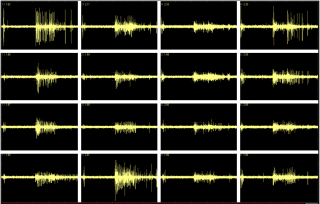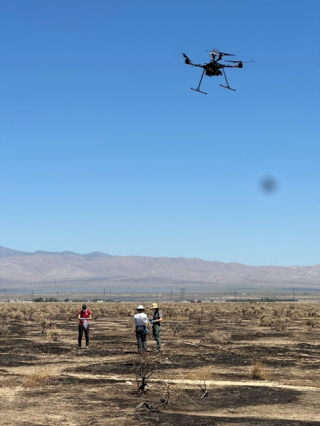High-Risk, High-Reward Research with EPA’s Pathfinder Innovation Projects
Published August 20, 2024
Wouldn’t it be amazing if we could learn how chemicals affect the developing brain in a quick and cost-effective way? Or if we could gather water quality data from a boat without having to stop and collect samples at multiple locations? What about if we could predict the spread of a fungal pathogen by sampling smoke from wildfires?
EPA scientists have answered questions like these and more with Pathfinder Innovation Projects (PIPs). Through an internal competition, PIP winners receive seed funding and additional research time to pursue their high-risk, high-reward research ideas.
The PIPs program helps EPA incubate innovative research through projects that explore new approaches to high priority topics, respond to emerging environmental issues, and build the expertise of researchers in their chosen fields of study.
The PIPs program was launched in 2011 and has funded a total of 153 research projects since its inception. EPA has incorporated several successful PIPs into its national research programs, and methods first developed through PIPs have even been used to support regulatory decisions. PIPs provide EPA scientists an important testbed to try out innovative and exciting ideas that could become transformative environmental solutions. Read about some successful PIPs below.
Brain on a Chip

EPA scientists have long been interested in the potential effects of chemicals on developing brains in embryos, infants, and children. However, traditional methods for testing these effects are expensive, time-consuming, and rely on animal models. Because of that, many chemicals have not been studied using these methods, resulting in gaps in what we know about chemicals found in the environment.
In 2013, Dr. Timothy Shafer’s team at EPA received PIP funding to develop a new, lower cost approach to quickly detect when chemicals may cause developmental neurological changes. The team grew a network of brain cells in a laboratory and measured the network’s electrical activity using an array of tiny electrodes. This lab-grown network simulates the electrical activity of a human brain; chemicals that cause changes in this “brain on a chip” are flagged as potential candidates that could impact developing brains in humans.
With the help of a jump start from PIPs, the “brain on a chip” has become an integral part of EPA’s Chemical Safety for Sustainability research program.
“PIPs allowed us to really get this technology up and running,” Dr. Shafer said. “It allowed us to generate enough data to support further development and use of this approach.”
Today, EPA is using the method to test new and existing chemicals (including high priority contaminants such as PFAS), and the data are informing EPA’s regulatory decisions. For example, according to Dr. Shafer, “brain on a chip” informed a decision about a new pesticide and saved about a year and a half of EPA staff time and over $1 million compared to traditional methods.
Underway Water Quality Lab on Research Vessel

EPA’s research vessels are critical tools for studying environmental concerns like water quality, contaminants, and harmful algal blooms in the Great Lakes. However, predicting the exact location of these concerns can be challenging, making it essential for the ships to be positioned in the right place to study them. To tackle this issue, EPA scientists wanted to continuously collect data on emerging environmental concerns, rather than relying on the research vessel’s scheduled sampling stops.
In 2023, EPA scientist Ryan Lepak received PIP funding to develop a new system on EPA’s Lake Explorer II, enabling it to monitor water quality while in motion. The system continuously pipes water from the lake into an array of sensors that monitor key metrics such as temperature, pH, blue green algae, chlorophyll, and, with the help of National Oceanic and Atmospheric Administration collaborators, dissolved carbon dioxide. It also collects larger particles using filters so that researchers can determine exactly what contaminants, like mercury and PFAS, are present in a particular area. These devices enable scientists to collect a wide range of information about the lake without stopping the ship or interrupting its planned research activities.
Additionally, the system incorporates custom software that allows EPA scientists to follow up on noteworthy findings. When the sensors detect conditions that merit further attention — such as sudden changes in water temperature or signs of a harmful algal bloom — the system automatically collects a sample of water and stores it for future analysis.
This exciting new technology is being deployed on the Lake Explorer II this summer and is already generating interest from other researchers in the Great Lakes area. According to Dr. Lepak, other research vessels, both within and outside the EPA, have expressed interest in deploying similar technologies on their ships.
Valley Fever and Wildfires

Valley fever is an infection caused by inhaling the Coccidioides fungus, which lives in soils in the western United States. According to the Centers for Disease Control and Prevention, Valley fever is becoming increasingly common but is often misdiagnosed. The disease can be mistaken for other types of pneumonia, and, while most patients get better on their own, patients who do need treatment may remain sick for weeks before receiving the right diagnosis and care. Because of the high rate of misdiagnosis, researchers are looking for better ways to determine where and when Valley fever risk is high, so they can warn doctors to be on the lookout for symptoms.
Building on research that suggests a connection between Valley fever and wildfire, EPA scientist Jim Markwiese hypothesized that people might be inhaling Coccidioides spores from wildfire smoke. However, he needed a way to test this hypothesis, as detecting these airborne spores poses significant challenges.
In 2023, Dr. Markwiese and his collaborators received PIP funding to deploy drones to collect air samples of Coccidioides spores. As a proof-of-concept test, the team flew drones equipped with biological sampling devices over known, non-wildfire Valley fever hotspots in the San Joaquin Valley, California. This novel method was able to successfully capture airborne Coccidioides spores for the first time, demonstrating that drone sampling was an effective approach to collecting this elusive, inhalable pathogen.
Now that they know their sampling method works, Dr. Markwiese and his collaborators hope to test the method directly on wildfire smoke in the future. If this project can provide information about when and where Coccidioides spores are present in a particular area, public health officials will be able to alert doctors of Valley fever as a possible diagnosis. This early intervention could lead to earlier treatment and better outcomes for patients.
“These are literally lifesaving measures that we could put into place,” Dr. Markwiese said. “We may not cure Valley fever with this technology, but we can help people get to a cure faster.”
From the developing brain to Valley fever, these are just a few examples of how EPA researchers are pursuing their innovative ideas for solving our most pressing environmental problems. In addition to these projects, 15 new 2024 PIPs were selected in June to begin research on topics such as emerging contaminants, and more.
If you want to learn more about this next generation of innovative EPA research, visit the PIPs website.
This article was written by Seamus Caslin, Oak Ridge Associated Universities Research participant with EPA.
